Ever launched a dev tool, got a few signups, and then… nothing?
No adoption, no feedback, no idea what was missed.
Most teams blame the product, but the real problem usually starts earlier: they never built a clear developer persona.
In this guide, you'll learn how to create one that actually drives adoption (and why one persona is rarely enough).
What is a developer persona?
A developer persona is a detailed profile of the people you're building for. The ones who will use, buy, or influence the adoption of your tool. It defines their role, context, motivations, and constraints, and shows how they define success.
This helps you write, design, and build in a way that speaks their language.
Companies that skip creating detailed dev personas usually treat all developers the same and then get confused when their tools don't take off.
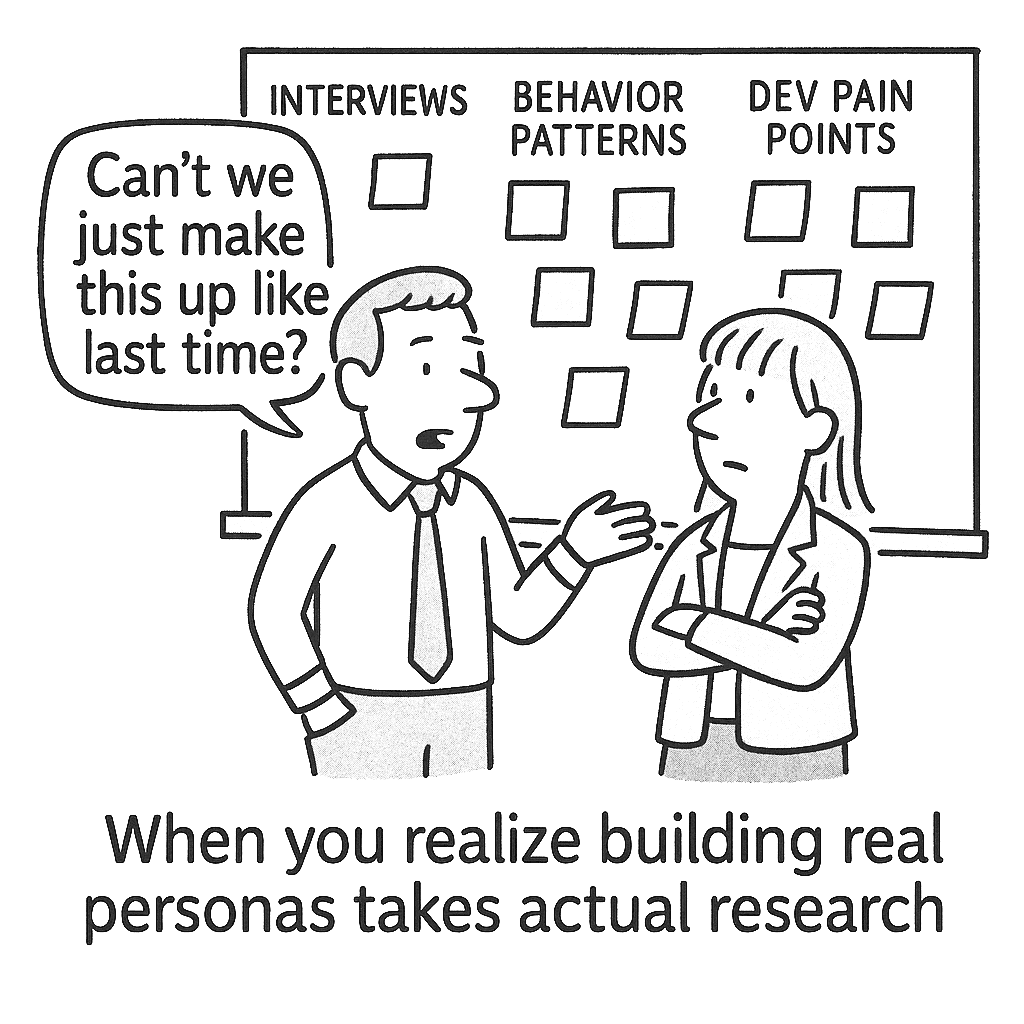
Creating detailed developer personas requires research. Here's what you should avoid doing:
❌ Bad practice: Targeting "developers" as one group. You end up writing vague copy and shipping features that could fit anyone, so it helps no one.
Here's what you should do instead:
✅ Good practice: Getting specific about the role, context, and what success means to them.
I'll share examples and templates below but, before that, you also need to understand the idea of a buying committee.
The buying committee
Tool adoption is rarely decided by one person. At most companies, three layers influence the buying process, and each one has different interests, needs a different type of proof.
I'll simplify it a bit:
Developer
They are the end user of the tool. They need clear documentation, value recipes, and so on.
Manager
They lead the team. They care about workflow fit, maintenance cost, and delivery impact. They want to see integration points and measurable benefits.
CTO
They own direction and risk. They need compliance answers, vendor reliability, and confidence that adoption scales.
Now, let's learn how to define your developer persona using a canvas that we've created, inspired by the book Developer-Facing Startup by Adam Frankl and the Developer Personas structure by Lazar Nikolov.
The developer persona canvas
Now that you understand why one-size-fits-all personas don't work, it's time to structure them properly. The canvas below shows the core elements every developer persona should include.
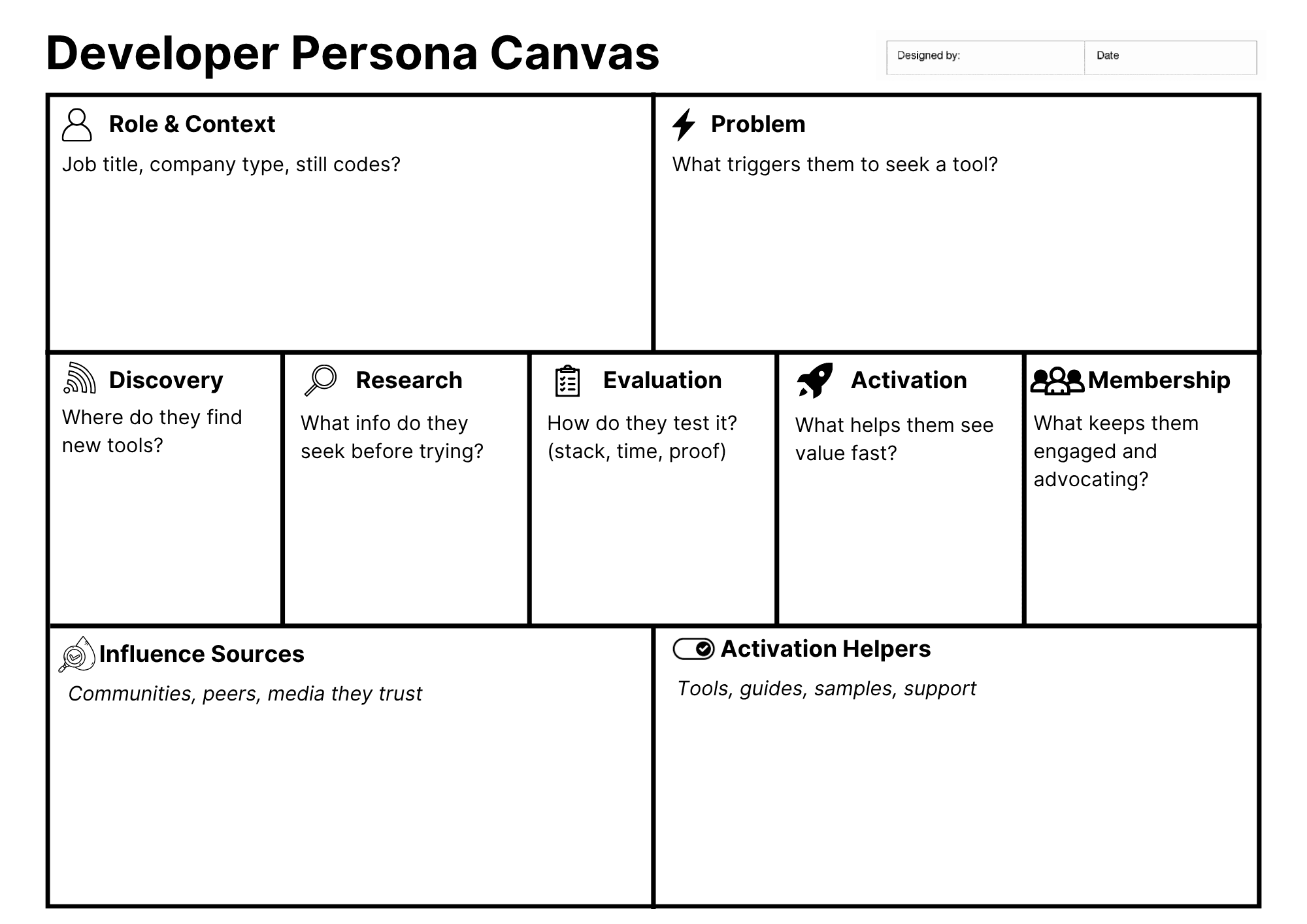
Let's break it down step by step so you can fill it out with real data.
Step 1: Define the person and problem
Before you jump into interviews or templates, start with a few basic assumptions. Who do you think your tool helps, and what's breaking their flow right now?
You're not inventing personas out of thin air, just sketching the people who might feel the problem most.
The person
A solo data engineer at a startup will have different constraints than a VP of Engineering at a Fortune 500. That's the importance of the role and context.
Here's an example of a profile:
- Job title: the real title you'd see on LinkedIn (e.g. "Backend Engineer", "MLOps Specialist").
- Languages and frameworks: list 2-3 main ones.
- Platforms: where they build (AWS, GCP, Docker, VS Code).
- Education or background: optional, only if it impacts how they work (e.g. self-taught, bootcamp, PhD researcher).
- Company size: the number of employees.
The problem
What problem keeps them up at night? Identify the inciting event that forces them to act.
For example:
- "Scraper got blocked again"
- "Cl tests take 30 minutes to run"
- "Legal flagged our data collection"
- "We hit 10k requests/day and the old vendor throttled us"
These assumptions are your starting point, not your truth. You'll validate or discard them soon.
If you skip this and start "talking to developers" randomly, you'll end up with wrong data. The goal here is to start narrow enough to collect useful signals, not to define your entire market.
Step 2: Build your technical advisory board (TAB)
A Technical Advisory Board (or TAB for short) represents a small group of developers and technical leaders you talk to understand how your ideal customer thinks, evaluates tools, and makes decisions.
This is important because later you'll use their feedback to create your developer persona. And a great channel for recruiting your TAB is LinkedIn.
How to build a TAB with LinkedIn
Everyone's resume is on LinkedIn, which makes targeting easy. If you're building for CI/CD, search for "DevOps Engineer", "Platform Lead" or "SRE", and filter by company size or tech stack. For example, you could look for people mentioning "Kubernetes" or "Jenkins" if those align with your domain.
To expand your pool, look at comment threads on relevant blog posts, conference speakers in your space, or contributors to open‑source projects.
When you reach out, keep your message short, focused on the problem, and offer an incentive, otherwise, they'll just ignore you.
Here's a template of a message:
Hi Alfn, I'm [your name], a [your role] helping launch a developer tool that [your tool does what?].
I'm talking with [their role] leads to learn how you [they do what].
If you have 20–30 minutes, I'd love to hear your process. I can offer [the incentive] for your time and will share anonymized findings if you're interested.
On average, you should contact at least 100 people to have around one to three interviews. In some cases, there might be more or less, depending on the job role and their LinkedIn activity.
After you have at least five scheduled interviews, it's time to prepare for the call.
How to structure your questions for the TAM calls
Ask problem‑focused questions
Avoid pitching your product. A useful opener is the "magic wand" question:
If you could wave a magic wand and change anything about how you handle [the problem], what would it be?
Then follow up with:
If that change happened, how would your life or work look different?
This helps the person go deeper. You're not looking for "nice-to-have" fixes. You want the issues that grow, block work, or cause real pain when left unsolved.
Keep it short
TAB calls are 30‑minute conversations. You're there to listen, not to sell.
If you're early-stage, one-offs are gold. They're the fastest way to uncover patterns, test your assumptions, and learn how people describe their own pain.
Summarize and share with your team
After each conversation, write up the insights. List the triggers, blockers, or language patterns that stood out.
Share those notes with your internal team so everyone has the same picture.
Step 3: Map how they discover and evaluate tools
Now that you understand who they are and what really hurts, figure out how they find, judge, and adopt solutions.
This is where the DREAM sequence comes in: Discovery, Research, Evaluation, Activation, Membership.
Discovery: Where they hear about solutions
Developers constantly scan their "technology discovery loop", like blogs, newsletters, conferences and peer groups to stay relevant.
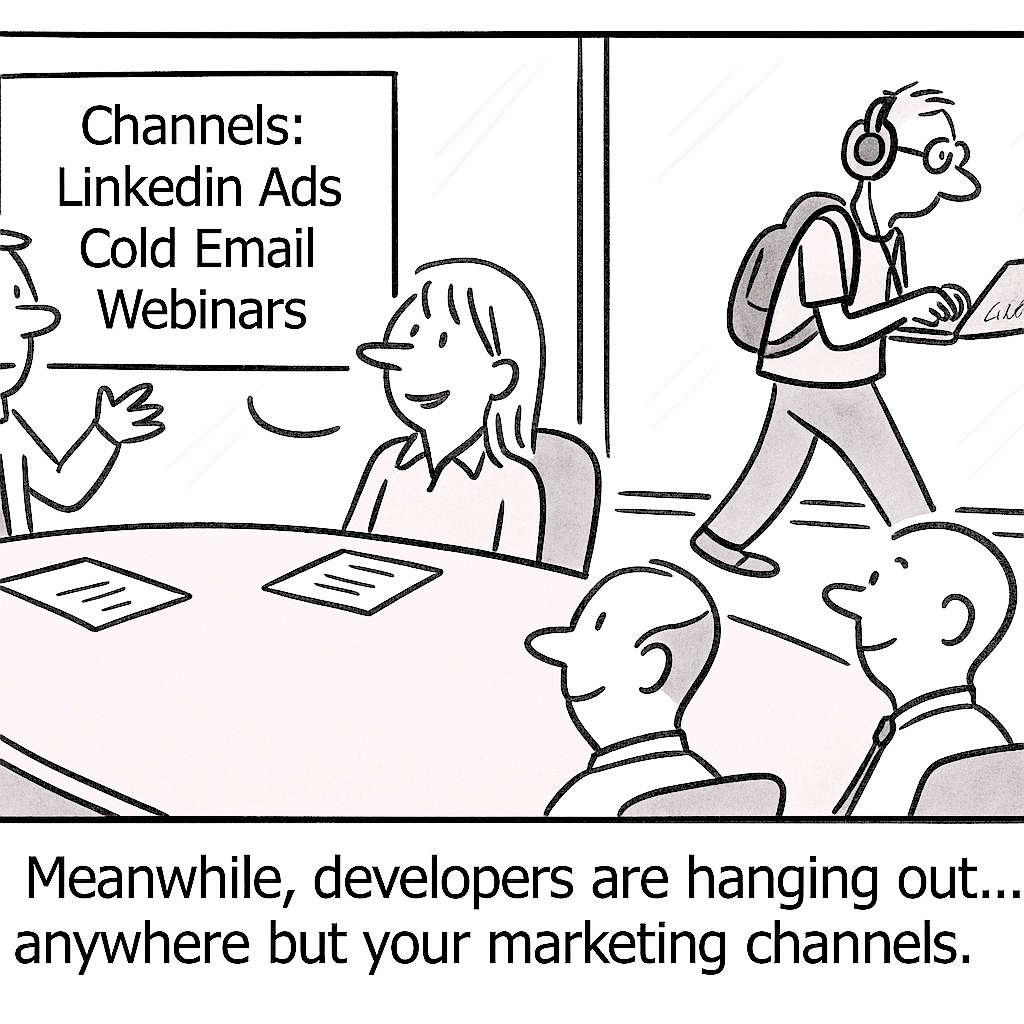
Ask each interviewee how they discover new tools.
The answers might include GitHub trending projects, Hacker News, Stack Overflow, a security Slack channel or industry events. Knowing these channels helps you show up where developers already look for solutions..
Research: When curiosity turns into intent
At this stage, developers already know their problem and are checking whether your product fits.
They're scanning your website, docs, or community space, not to buy yet, but to confirm if your tool could solve their problem later. Think of it as the "quiet comparison" stage.
Your job is to capture what each persona looks for and where they go to validate those answers.
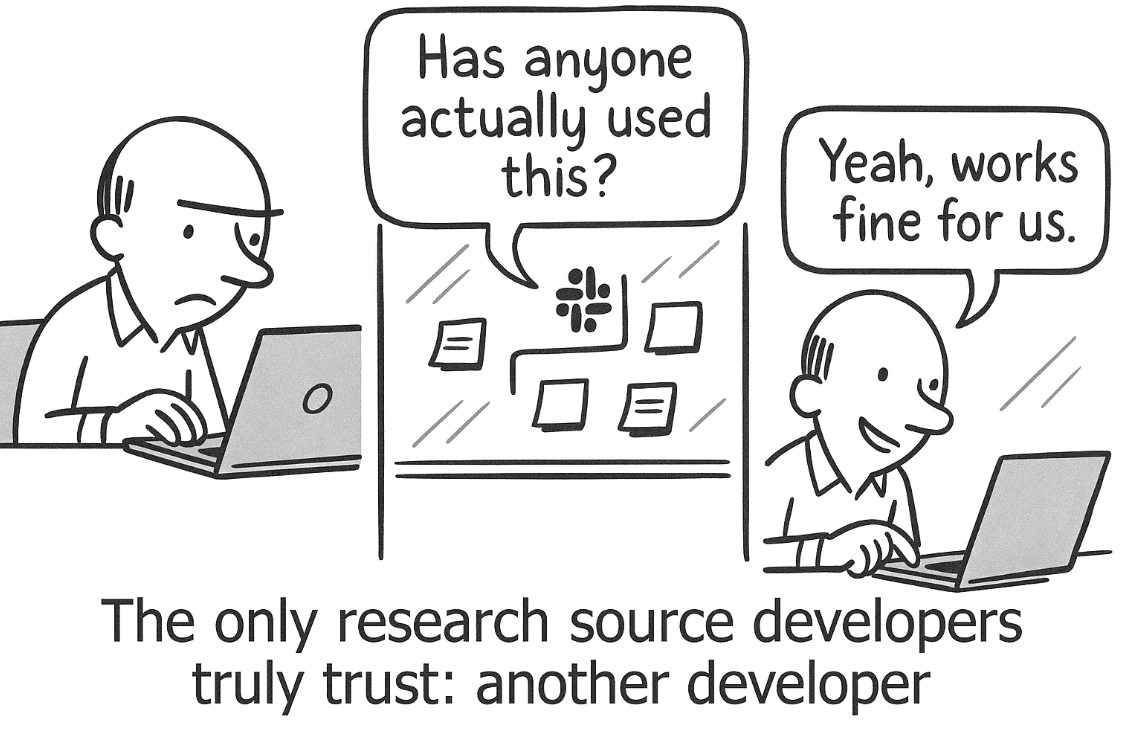
How to capture this on your canvas:
Information they seek
What do they want to understand before trying anything?
Examples: architecture diagram, SDK overview, data handling, compliance details, or pricing transparency.
Proof they trust
Where do they look for credibility?
Examples: blog posts written by engineers, open-source repos, peer testimonials, or technical deep dives shared by real users.
Actionable example
If you're targeting DevOps leads, they might search "Kubernetes log aggregation comparison," open three blog posts, and bookmark one GitHub repo to test later. Write that behavior down, that's your research pattern.
By mapping these signals, you'll know what information to highlight early (before they ever sign up) and what proof they'll believe when they find it.
Evaluation: Will it work in their unique environment?
It's about whether your tool works in their unique stack within a limited window and with no support.
A Fortune 500 architect might download your product on a weekend using a burner email and try to integrate it. If it doesn't work by Sunday afternoon, they'll move on.
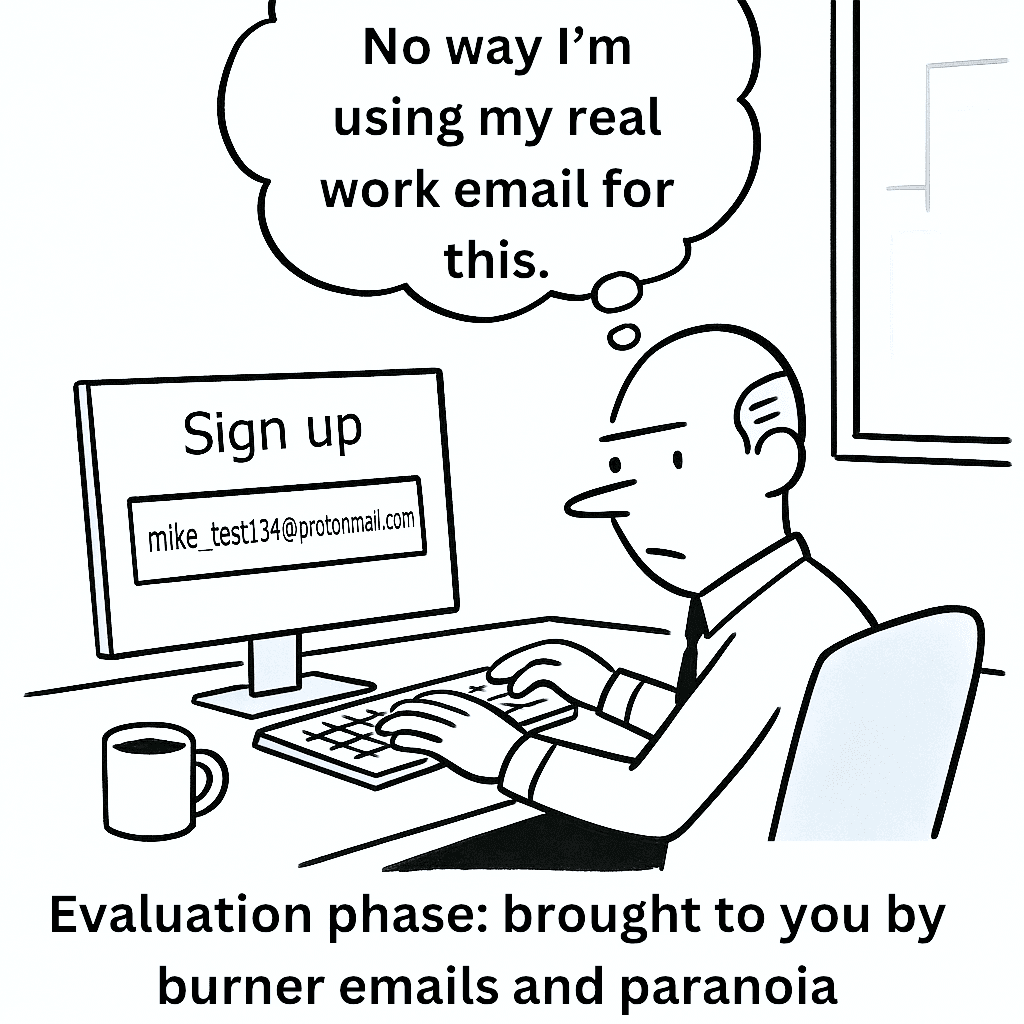
Evaluation is not about verifying marketing claims. Capture what each persona must verify (compatibility with Kubernetes, SOC 2 reports, Python SDK quality), how long they'll spend and how much help they expect.
Activation: How quickly can they see value?
Once your developer persona decides to try your tool, the goal is to get them from knowing nothing to their first success as fast as possible.

The speed of learning how your tool works is the key.
Capture what resources each persona needs to succeed: sample projects, API playgrounds, quickstart videos, or Slack support.
Membership: From user to evangelist
Developers aren't leads, they're potential members of your community.
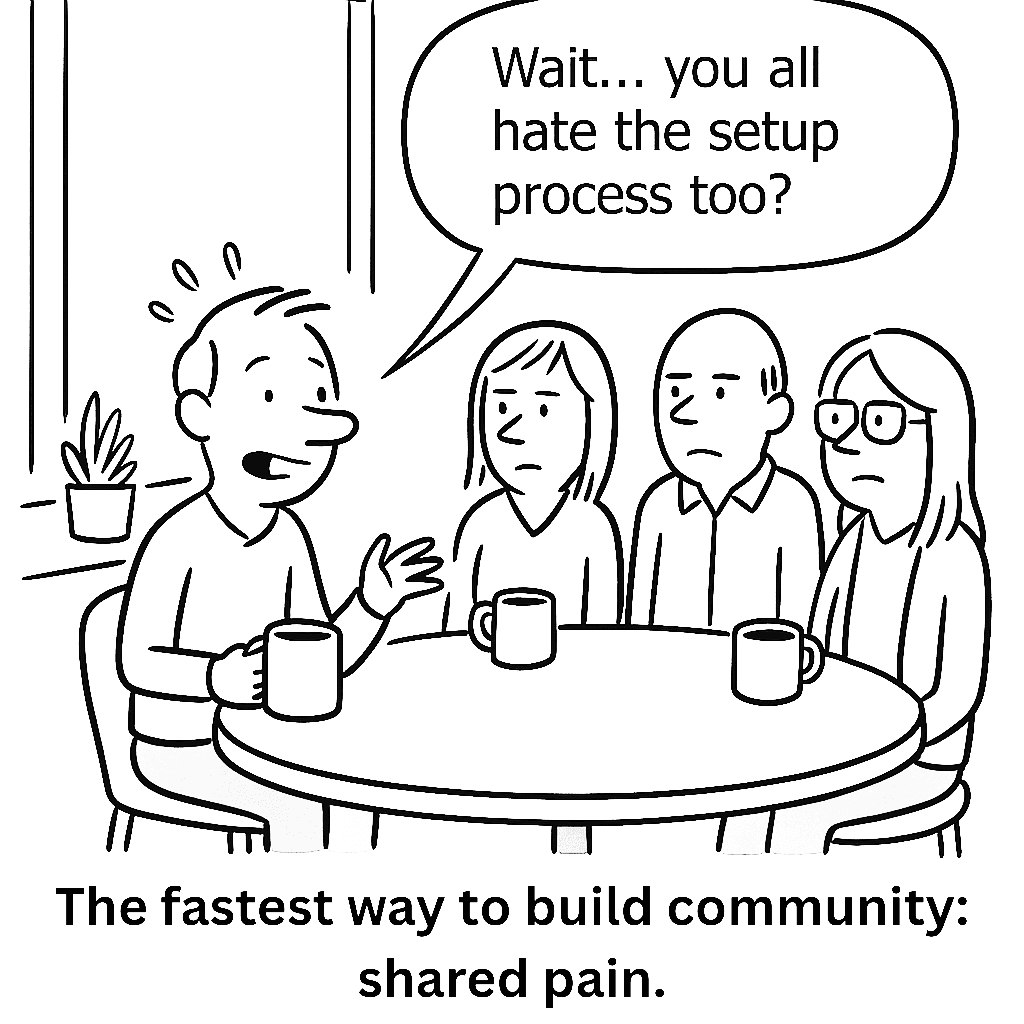
Membership is about turning early adopters into active participants who provide feedback, share success stories and help you iterate.
Capture what makes each persona feel part of a community, like forums, user groups, AMAs, and what social proof they need to advocate for you.
Step 4: Uncover what really drives adoption
Once you've mapped how each role discovers and evaluates tools, there are still a few signals that quietly decide whether adoption happens or dies off.
These don't always show up in interviews unless you ask directly, but they're critical.
Influence sources
Every developer persona has their own circle of trust, like people, media, and spaces that shape what they believe.
Some rely on peers and private Slack groups. Others trust creators, GitHub maintainers, or company engineers who blog about their setups.
Ask questions like:
- "When you're evaluating new tools, whose opinion do you actually trust?"
- "Which blogs, YouTube channels, or communities do you follow most?"
List 3–5 key influence sources for each persona. For example:
- DevOps Slack groups, internal engineering forums, or DataTalks Club
- Specific creators like TechWorld with Nana or FireShip
- Niche newsletters such as Data Eng Weekly or DevOps'ish
- Media or brands that carry weight (CNCF, AWS, OpenAI, JetBrains)
These are the credibility shortcuts where your proof should live later (guest posts, AMAs, talks, integrations).
Activation helpers
Activation is where interest either turns into adoption or disappears.
Here's where you capture all the tools, guides, and resources that help your persona see value fast. For example:
- Example projects, quick-start repos, or API playgrounds
- One-line install scripts, SDKs, or CLI tools
- Tutorials written by engineers, not marketers
- Docs that show real-world workflows instead of toy examples
- Slack or Discord support channels where they can ask quick questions
Match these helpers to each persona's preferences. A backend engineer might want a GitHub repo with code samples. A CTO might need a deck that proves ROI and team adoption time.
If activation fails, adoption never starts, so these helpers are your biggest conversion lever.
Step 5: Iterate and evolve
Developer personas aren't static docs you forget in Notion. They're living systems that evolve with every new signal.
After each product release or campaign, collect new data:
- What changed in discovery channels?
- Which pain became stronger?
- Which role now drives adoption?
Keep your TAB alive, go back to those same people every few months to revisit your ICP.
The moment you stop updating your personas, they stop being useful. The best teams treat them like code: reviewed, tested, and refactored often.
Free developer persona template
If you want to start fast, you can use the following developer persona canvas to guide your own research. They follow the same structure explained and include all the key fields seen in the article.
Conclusion
Most teams create personas once and forget about them. The best teams treat them as living systems that evolve with every new insight.
Keep talking to users, update what you learn, and let those findings shape your product, content, and proof. That ongoing loop is what turns "developer marketing" into something developers actually trust.
When you ground your personas in real behavior and the DREAM sequence, you stop guessing what developers want and start building for the people who truly decide adoption.
If you want to avoid making costly mistakes when defining your developer personas (or developer ICP) and need guidance from someone who's done it before, drop me a message on LinkedIn or schedule a consultation call.
